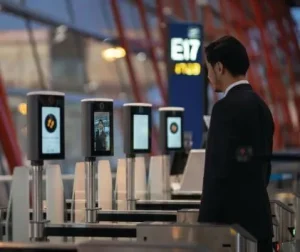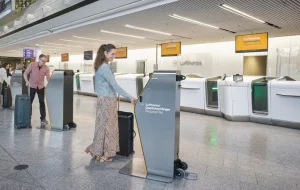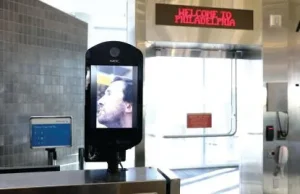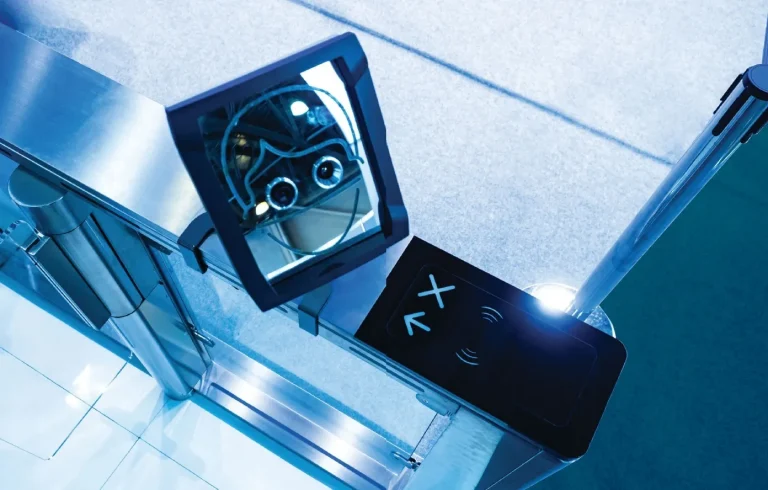Digital travel identity promises a seamless and more secure passenger experience with operational benefits for airport operators. What are early adopters learning about biometric technology, and how can stakeholders make the most of their investment?
From tickets to currency, digitalization is whittling down the once-vital checklist of items travelers needed to carry, and paper passports seem increasingly likely to follow suit. Transitioning to a digital identity offers further opportunities to improve the travel experience while overcoming the drawbacks of a process that is still heavily manual and paper driven. But deploying these solutions isn’t a straightforward process.
Facial recognition hasn’t always had a warm welcome, including concerns about privacy, accuracy and bias, plus opposition to police forces using it for enforcement and research advising cautious applications. In 2019, the US National Institute of Standards and Technology (NIST) studied 189 commercial algorithms processing more than 18 million images from mug shots, visa applications and border-crossing photographs. With false positives varying among demographics, vendors and ages, the agency warned operators to be wary of their chosen system’s bias.

However, the capacity-constrained aviation sector is optimistic. IATA’s proposed One ID standard and ICAO’s Digital Travel Credential (DTC) system include the use of biometrics, while the US Customs and Border Protection (CBP) is now using facial identification at international arrival and departure gates. It’s a learning process that is highlighting both the bottlenecks and peripheral advantages of the next steps. Read on to discover PTW’s five key observations on the best path forward.
Address privacy concerns
Customer perceptions of biometrics are, according to Jens Sanner, Fraport’s program director for digital services and transformation, one of the biggest challenges. He notes that discussions often get mired in privacy concerns, which overlook the potential benefits in this area.
“Society associates biometrics with mass surveillance,” he says. “We need to pick up the pieces of where travelers are with their fears, reach out to them and say, ‘Currently you show me all this bio page, but we only need the bottom two lines of your passport.’ It’s telling passengers we need less from them in the digital world than we do now.”
A common pushback from passengers is reluctance to supply data to the government, though most are unaware that airlines are required by law to do so anyway. Digital identity could enable governments to directly validate and share only the eligibility to travel, reducing the need for airlines to handle unnecessary personal data.

Rob Broere, CEO of TravelMustChange Consultancy, explains, “Current solutions don’t fully address this. DTC is great for governments, but overkill in terms of data that the private-sector airlines – and, indirectly, airports – get. This can and will cause privacy concerns. IATA is trying to address that by looking at a subset version of the DTC, but that means that the 100% guaranteed-not-altered package is not secure anymore. Governments might have issues with this.”
Privacy concerns shaped the way CBP approached the biometric facial matching services it now offers to airlines, airports and the TSA. Jody Hardin, executive director for planning, program analysis and evaluation in the agency’s Office of Field Operations, says safeguards are important to help travelers feel comfortable.
“It’s not something where we give anything, privacy-wise, back to carriers. We’re letting them know when there is a match and, when they are not able to find a match in our systems, we’re telling them to have an agent [process the passenger manually] to make sure.”
Collaboration is vital
Effective deployment relies on cooperation between stakeholders, and Hardin says that passengers are part of that process. CBP’s biometric entry/exit program was designed to be secure and seamless based on analysis of where it could add benefits to any bottleneck-prone processes for passengers.
“Working with the public and stakeholders has been more successful than regulating and trying to force use,” she explains. “Regulating leads to a lot more challenges than trying to test things out voluntarily with people, seeing what their comfort level is, and making sure that you’re working with them. It means that they’re understanding the benefits, and we’re addressing any concerns they might have as well.”
Sacramento County Department of Airports has deployed Amadeus Facial Biometrics technology for international flights, compliant with CBP requirements. Senior public information officer Scott Johnston says the combined hardware, software and cloud system was added to its existing common use terminal equipment (CUTE) vendor contract and approaches vary. He explains, “Each airline needs to decide to what extent they will interface their boarding applications with the biometric system. In a one-step system, the facial recognition replaces presentation of the boarding pass and the identity document. However, the integration must be worked out between the airline and the biometric vendor/operator – in our case, with the cloud portion of the vendor’s system.”

Working with vendors is also vital. Philadelphia International Airport introduced facial recognition at its international gates at the start of 2023, though US citizens and Green Card holders can opt out. Chief information officer Allen Mehta says that this followed live trials with three vendors, identifying an NEC/SITA solution as the best. The solution included accommodating very tall passengers and those in wheelchairs.
The biometric system has proved popular and offers other benefits, he says. “We’ve seen a 15- to 20-minute overall reduction in boarding time for our international flights by airlines who are employing the one-step solution. Gate agents are able to focus on the passenger experience and answering questions, versus looking at paperwork all the time.”

Respond to passenger demands
Consumer expectations have changed since the pandemic, observes Rubén Lozano, aviation director at technology integration specialist Apollocom. The rise of self-service checkouts in shops and biometric security for smartphones have made travelers more open to the technology and demand similar convenience at airports.
“One of the things that authorities, airports and airlines realized back in mid-2021 was that passengers were extremely keen to try different technologies to make their traveling easy, seamless and touchless,” he comments. “Biometric technology is able to fulfill and integrate all these passenger requirements, but the most important thing is that they need to feel completely self-sufficient.”
In partnership with Vision-Box, Apollocom has been exploring possible business opportunities with airports in Mexico to promote technology such as biometric travel, border control and digital identity solutions. The company was the first to install such technology in a Mexican airport, and Lozano says it offers passengers paperless, contactless self-service from off-site check-in to boarding.
“To see the real benefits, a two-step biometric system doesn’t work [compared with a seamless system]. Systems have to be focused on how to make the passenger journey easier,” he comments. Biometric identity has other potential applications in the terminal, notes Broere. It could highlight passengers in need of additional security checks, which would streamline the experience for others and benefit retail operations as well.
“Biometrics can mean that passengers no longer need to show a passport and boarding pass at duty free,” he says. “For instance, to prove that they are eligible to buy a certain item depending on age or destination, such as alcohol or a taxable item going outside the Schengen area in a Schengen/non-Schengen mixed environment.”

Work with regulations
The bottlenecks affecting biometric identity are shifting, according to Nick van Straten, program director of biometrics and clearance at KLM Royal Dutch Airlines. The company is supporting a DTC1 pilot, run by the Dutch government for the European Commission, at Schiphol Airport. Passengers enroll for biometric boarding and border crossing, then tap their passport’s NFC chip at the gate to prove the document itself is present. The technology and end users are ready, but there is one key challenge to overcome.
“Legislation is not keeping up with the possibilities of new technology. Airlines perform ID checks typically because governments require it from them,” he comments. “It would help if the relevant legislation provided clearer legal grounds for airlines to use technology such as facial recognition, and the derivation and storage of the required information from the passport chip.
“In the long run one could even question whether this task could not be – at least partially – taken back by governments by using this technology. As, for example, the CBP is doing with the biometric entry and exit gates.”
With slow-moving and complex regulations, Sanner says airports need to carefully consider early use cases for biometrics. “Different people have different interests [in this data]. I see, from other European airports, a huge discussion on privacy issues with different types of interest. Some say they want to use this data, because data is the new oil.
“I say, ‘Do you really want to use that?’ Biometrics is one hell of a nut to crunch, especially if you want to use that data [for other things]. Look at the basics, the pure process, and not doing anything else with the data – otherwise you quickly get into a corner where you can’t get out.”
Understand the bigger picture
Transitioning to DTC offers several efficiencies for air travel, Broere believes. It provides better-quality data and, with the second and third phases promising a digital copy and then replacement of paper passports, it moves processes off-site and could enable airports to optimize the way terminals are laid out.
“The reduction in processing means less space per passenger for mandatory processing at various places, such as check-in gates and immigration,” he says. “That means you can either handle more people in the same space and delay having to build extensions to handle more passengers, or you can fill the space freed up with revenue generators such as retail and food and beverage outlets.”

Facial recognition was introduced in Frankfurt Airport in 2020, working with Lufthansa and Star Alliance, and with SITA and NEC as vendors. Despite early setbacks due to Covid-19 mask requirements, customers are now using it naturally and the effects are marked.
“We calculated that we are having up to 30% better throughput, because customers don’t need to prepare themselves in front of an e-gate,” says Fraport’s Sanner. “Looking into DTC, and taking a lot off-airport, we can increase our capacity without building new terminals. We don’t want to build new terminals. Airports need to look into how to increase capacity in their current setting.”
Lozano adds that biometrics could also overcome airports’ recruitment challenges – something that has become more acute since the pandemic. “Technology can help the aviation sector optimize the staff it still has, using them only where necessary at critical stages of the operation,” he comments. “The technology is not going to replace staff; it’s going to complement them.”
How accurate is the technology?
Despite criticisms leveled at facial recognition, passenger processing has proved to be a good fit for the technology. According to Jody Hardin, since the CBP introduced biometric identification, the agency has processed 408 million passengers at terminals and border crossings, with a 99.6% accuracy rate for international arrivals and 98.3% for departures.
“Biometrics enables us to quickly match travelers to their documents and find information we have in our holdings,” she says. “We were able to leverage that to take processes that our frontline personnel had to do manually and make them very seamless, which organically led to expediting the traveler experience.”

Philadelphia International’s Allen Mehta also notes minor challenges post-deployment, but not due to hardware or software. Inadequate lighting, glare from retail operations and reflections in glass were easily rectified, for example by adjusting camera angles or adding lights.
“Within four-and-a-half months we were able to go from zero biometrics to full adoption in our international gates, where our US airline partners are doing a one-step solution,” he explains. “We’re very close to implementing all our airlines to use the one-step solution.”
However, KLM’s Nick van Straten says that trials remain important as business cases are limited, deployments are small and today’s technology – such as NFC chips – still have unresolved technical issues.
“We are still at the very early stages and have a lot to learn before we can scale up,” he comments. “The cost of this new technology is considerable and, as an industry, we need to cooperate to come to a solution that will substantially enhance customer experience while bringing a positive business case in terms of improved airport operations at a preferably lower cost.”
PASSENGER TERMINAL CONFERENCE
Don’t miss Hari Marar, MD & CEO at Bangalore International Airport, present ‘Digitalizing the passenger journey: Bangalore’s success story of leveraging biometrics’ at Passenger Terminal Conference 2024!
This article originally appeared in the January 2023 issue of Passenger Terminal World. To view the magazine in full, click here.

